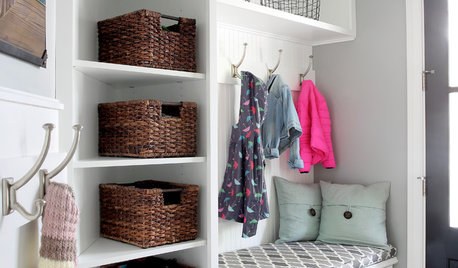Easy plants from seed to start a small business?
abacoian
15 years ago
Related Stories

CONTAINER GARDENS8 Easy Container Plants to Grow From Seed
Get beautiful blooms and herbs in summer by starting these choice garden picks from seed in spring
Full Story
GARDENING GUIDESHow to Plant a New Lawn From Seed
Choose from more grass varieties and save money over sod by starting your lawn from seed
Full Story
GARDENING GUIDESSeeds or Seedlings? How to Get Your Garden Started
Growing delicious herbs and vegetables starts with knowing your goals and when you want to plant
Full Story
ARCHITECTUREDesign Practice: How to Start Your Architecture Business
Pro to pro: Get your architecture or design practice out of your daydreams and into reality with these initial moves
Full Story
GARDENING FOR BUTTERFLIESA Quick-Start Guide to Bird-Watching for Fun and Learning
Set out some seed and grab your field guide. Bird-watching is an easy, entertaining and educational activity for the whole family
Full Story
GARDENING GUIDES6 Steps to Get a Garden Off to a Glowing Start
Grow a lush, balanced garden from an empty patch of yard or neglected landscape spot with these easy-to-follow guidelines
Full Story
GARDENING GUIDESHow to Plant a New Lawn From Sod
Take the quick-start route to turf with sod; these installation guidelines will help ensure a healthy and long-lasting lawn
Full Story
MOST POPULAROrganized From the Start: 8 Smart Systems for Your New House
Establishing order at the outset will help prevent clutter from getting its foot in the door
Full Story
INSIDE HOUZZInside Houzz: Starting From Scratch in a Manhattan Apartment
Even no silverware was no sweat for a Houzz pro designer, who helped a globe-trotting consultant get a fresh design start
Full StorySponsored







laag
auntyara
Related Professionals
Beavercreek Landscape Architects & Landscape Designers · Hartford Landscape Contractors · Salem Landscape Contractors · Battle Ground Landscape Contractors · Biloxi Landscape Contractors · El Mirage Landscape Contractors · Fairview Landscape Contractors · Framingham Landscape Contractors · Pompano Beach Landscape Contractors · Royal Oak Landscape Contractors · San Benito Landscape Contractors · Waterford Landscape Contractors · Wells Landscape Contractors · Goldenrod Landscape Contractors · Golden Valley Landscape Contractorsknittlin
jacqueinthegorge
abacoianOriginal Author
knittlin
abacoianOriginal Author
hanselmanfarms
farmingvillefarmer
hanselmanfarms
muddydogs
hanselmanfarms